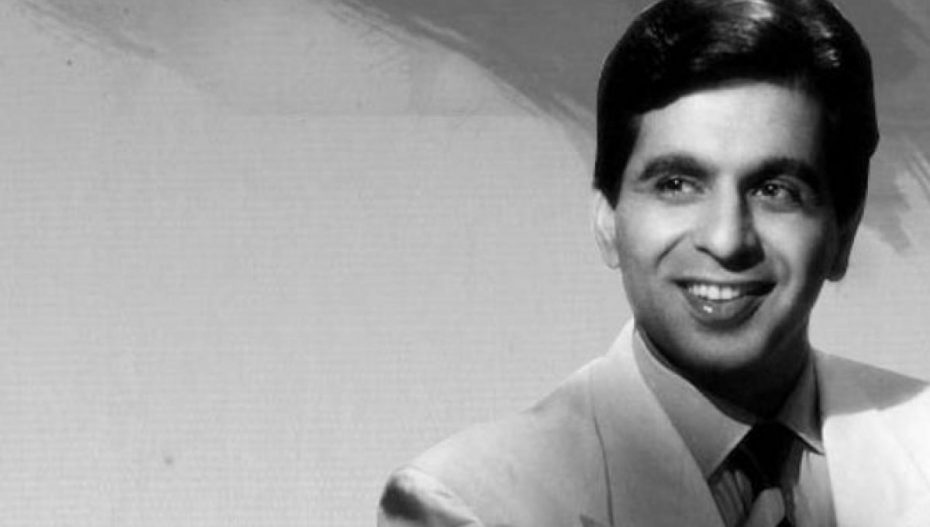Roshmila Bhattacharya
This morning, July 7, I woke up to the news that Dilip Kumar was gone. It took me a while to accept that this was not another mischievous rumour. This time it was true. At 7.30 am, at the age of 98, he had taken his final curtain call at Mumbai’s PD Hinduja Hospital.
As memories came flooding back, I recalled talking to Vyjayanthimala’s about their 1955 film, Devdas. The actress who played Chandramukhi confided that one day while shooting, she was so mesmerized by his drunken act that she was afraid she would forget her dialogue. Interestingly, while he had pages of monologue, she had just one line, “Aur mat piyo Devdas”, but blinded by his brilliance, even remembering that was a task. What makes this a performance par excellence is director Bimal Roy’s manager Amrit Shah’s revelation that though he convincingly played an alcoholic almost all through the tragic romance, Dilip Sahab did not touch a drop of liquor during the shoot.
The film made him a ‘Tragedy King’ at the age of 26. And while he carried this tag for a lifetime, the fact remains that he was equally adept at comedy as seen in films like Kohinoor and Ram Aur Shyam. He would however modestly downplay his talent, pointing out that the writer had the more difficult job of coming up with scenes and lines that tap an actor’s sense of comedy. “If the writing is brilliant, it is a cakewalk for any actor,” he would reason, pointing out that in Ram Aur Shyam, the contrast between the two lookalikes and their predicaments was beautifully etched out he had to evoke laughs.
Drama, comedy, even action scenes did not frazzle him, if anything did, it was dancing. Would you believe that the man who wooed Vyjayanthimalajiin Naya Daur to the tunes of “Ude jab jab zulfein teri, kavariyon ka dil machle” was afraid of shaking a leg. Filmmaker Subhash Ghai shared how the night before they were to shoot “Imli ka boota” for Saudagar, Dilip Sahab had confided to him that he was terrified of naach-gaana. No one would have guessed this the next morning as he blithely frolicked with Raaj Kumar.
Over the decades, whenever filmmakers have been asked to pick out their most sensual scene from a movie, many invariably zero in on the one in Mughal-e-Azam where Prince Salim is caressing the downy cheek of the beautiful Anarkali with a feather as Ustad Bade Ghulam Ali sings “Prem jogan banke” in the background. Music director, Naushad Ali, had revealed how Khan Sahab had no interest in singing for a film and had tried to fob off K Asif by quoting an astronomical fee of Rs 25,000. He was shocked when the director agreed without batting an eye, even giving him an advance of Rs 10,000.
The next day he was even more upset when the cocky young man pointed out that his rendition of the song in Raag Sohini was a little heavy and asked if he could soften it a bit. Ustadji stormed out, saying he would only sing now after he had seen the rushes of the scene. Asif sahab cut a print and screened it for him. Ustadji was reportedly so impressed with the “khubsoorat” Anarkali and her dashing shehzada that he sang the song four times, watching the two romance on screen, telling Asif Sahab to make sure what he chose sounded good.
Mughal-e-Azam premiered at Mumbai’s Maratha Mandir on August 5, 1960. Dilip Sahab was not present on the occasion. Saira Banu who had gone there specifically to meet the man she had fallen in love with the first time she saw him on screen as a 12-year-old schoolgirl, returned home disappointed. On November 10, 2004, she was his begum and by his side as they walked into Eros cinema for a special screening of the film which was returning to the theatres after 44 years.
A couple of days before, in a quick telephonic, Dilip sahab had told me that Asif sahab had been very confident of the film back in 1960. He asserted that was equally confident that it would do well in its all-colour digitized version, which had been his idea. “Cinema has changed since I did Aan, Azaad, Mughal-e-Azam, Devdas, Gunga Jumna and Madhumati. But the magic of celluloid remains,” he asserted.
Today, as the world bids adieu to one of our greatest actors, I remember him at his Pali Hill bungalow doing a photo session for a film magazine I was working for. He looked dapper in a dark blue suit and every time he turned towards the camera, there was a new expression to capture. I was a fresh-faced girl in my twenties then and by the end of the evening, I was won over by this Prince Charming from my parent’s generation. There never will be another Dilip Kumar.













